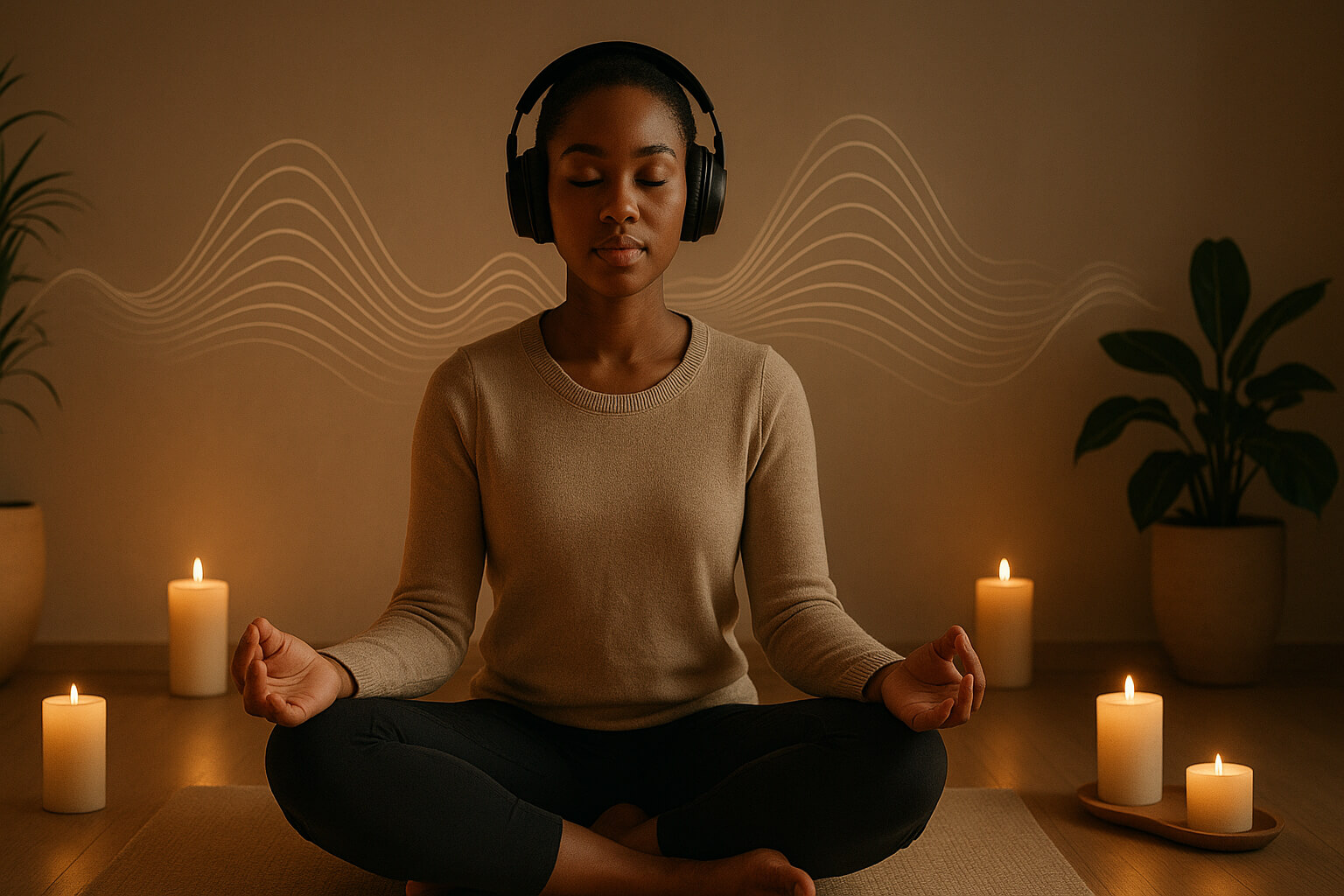How to Use Music for Meditation and Mindfulness

Music has the power to calm the mind, soothe the nervous system, and deepen our awareness of the present moment. When used intentionally, it becomes a powerful ally in your meditation or mindfulness practice—helping you focus, release anxiety, and build inner peace.
Whether you're just beginning or looking to deepen your current practice, here's a complete guide to integrating music into your mindfulness routine.
1. Understand the Role of Music in Meditation
- While some practitioners prefer silence, many find that soft, ambient music can make it easier to settle into a meditative state—especially for beginners. Music acts as a gentle guide for the mind, helping it stay anchored and less prone to distraction.
- Slow rhythms can regulate breathing and heart rate, while repetitive tones help lull the brain into alpha and theta brainwave states, which are associated with deep relaxation.
- Learn more about the science behind how music affects the brain in this beginner’s guide to music psychology.
2. Choose the Right Type of Music
- Not all music is created equal when it comes to mindfulness. Loud or lyrical music can stimulate the mind rather than quiet it. For meditation, the best music is minimalistic, slow, and soothing.
- Minimal or no lyrics
- 60–80 BPM (beats per minute)
- Repetitive structure
- Instruments like piano, hang drum, flute, harp, sitar, chimes, or singing bowls
3. Set the Right Environment
- Music is just one part of the meditation equation. Your environment significantly affects your ability to relax and stay present.
- Lower the lights or use candles
- Sit on a meditation cushion or supportive chair
- Eliminate distractions (put phones on Do Not Disturb)
- Diffuse calming essential oils (like lavender or sandalwood)
- For immersive sound quality, consider noise-canceling headphones like the Sony WH-1000XM5 to fully block out distractions and enhance your focus.
4. Sync Music with Breathing
- One of the simplest and most effective techniques is aligning your breath with the rhythm of the music. This helps regulate your nervous system and ground your awareness in the body.
- Try the Box Breathing Method:
- Inhale for 4 counts
- Hold for 4 counts
- Exhale for 4 counts
- Hold for 4 counts
- Let the music’s tempo guide the pace of your breath. If the track is especially calming, extend your exhales to deepen the relaxation response.
5. Use Music as a Focal Point
- In mindfulness, the key is gently returning your attention to a chosen anchor whenever your mind drifts. Music itself can serve as that anchor.
- A repeating melody
- The texture of a specific instrument
- The subtle changes in volume or rhythm
- The vibrations you feel in your body
- As you develop this skill, you'll find it easier to stay present, even without music.
6. Experiment with Different Meditation Styles
- Music complements many forms of meditation. Try integrating it into one (or more) of the following:
- Guided Meditation – Listen to a narration over soothing background music
- Sound Bath – Immerse yourself in healing sounds from gongs, singing bowls, or chimes
- Mantra Meditation – Chant or mentally repeat a phrase in sync with rhythmic music
- Walking Meditation – Pair slow instrumental music with mindful steps in nature
7. Be Consistent and Track Your Progress
- Like any mindfulness practice, the benefits build over time. Start small—a 10-minute session per day—and stay consistent. Consider keeping a simple journal to reflect on how the music made you feel or note which tracks worked best.
- You can also use helpful apps like:
- Breathwrk – Guided breathing exercises with musical rhythm
- Mindplace – Sound and light meditation tools for deeper sessions
- Balance – Adaptive meditation app with soundscapes
Final Thoughts: Don’t Just Zone Out—Tune In
Using music for meditation isn’t about escaping reality—it’s about deepening your connection to it. The right soundscapes can slow your mind, open your heart, and ground your awareness in the present.
With a little intention, the right music, and a quiet space, you can turn even the noisiest day into an opportunity for stillness and clarity.
